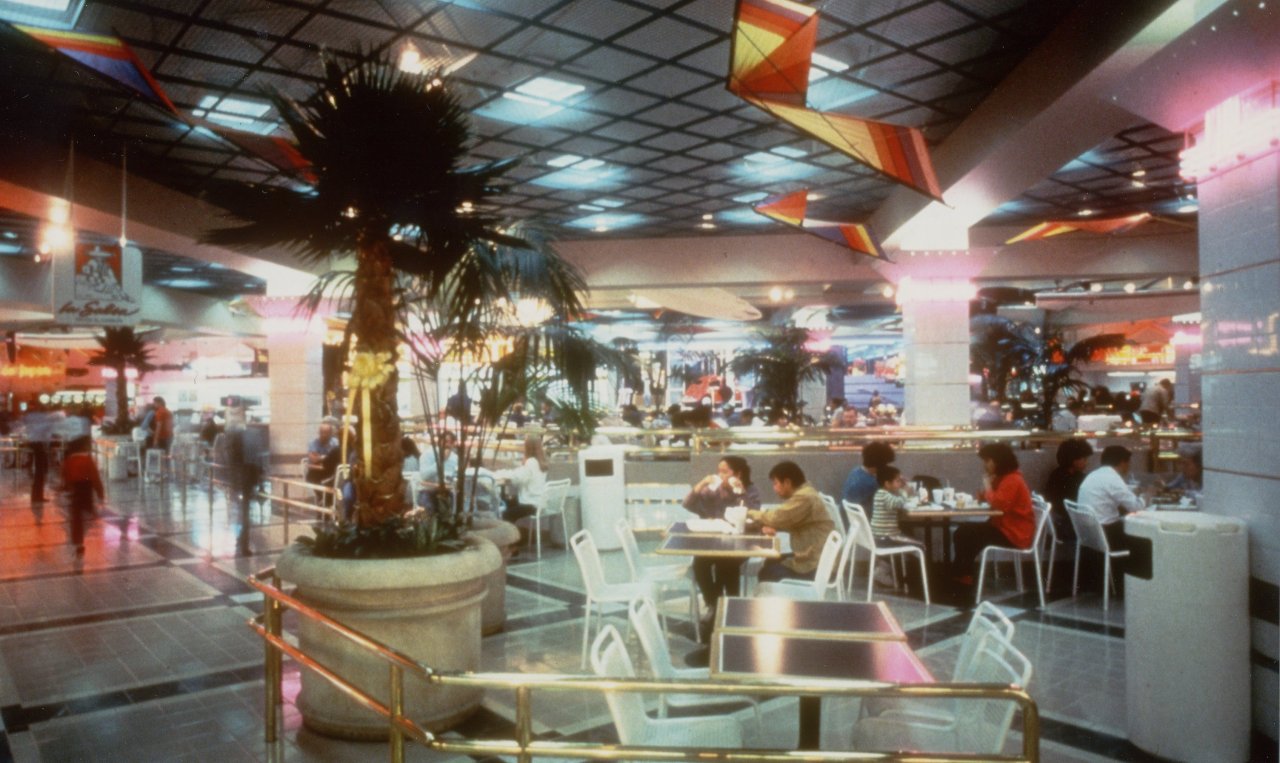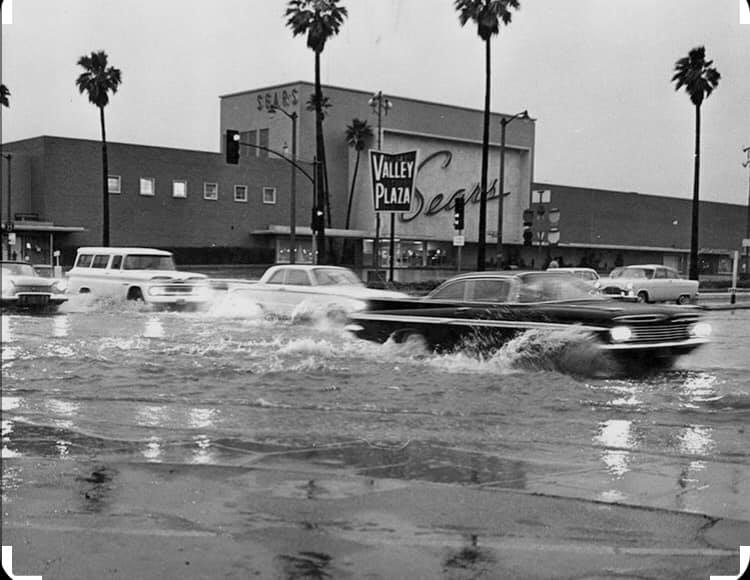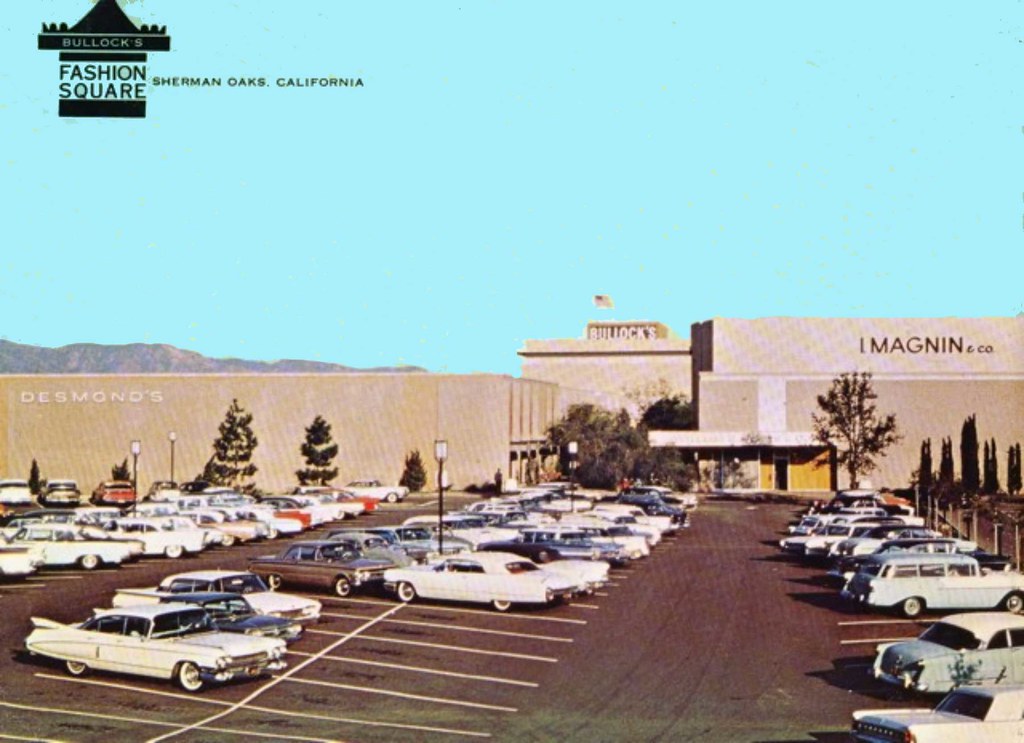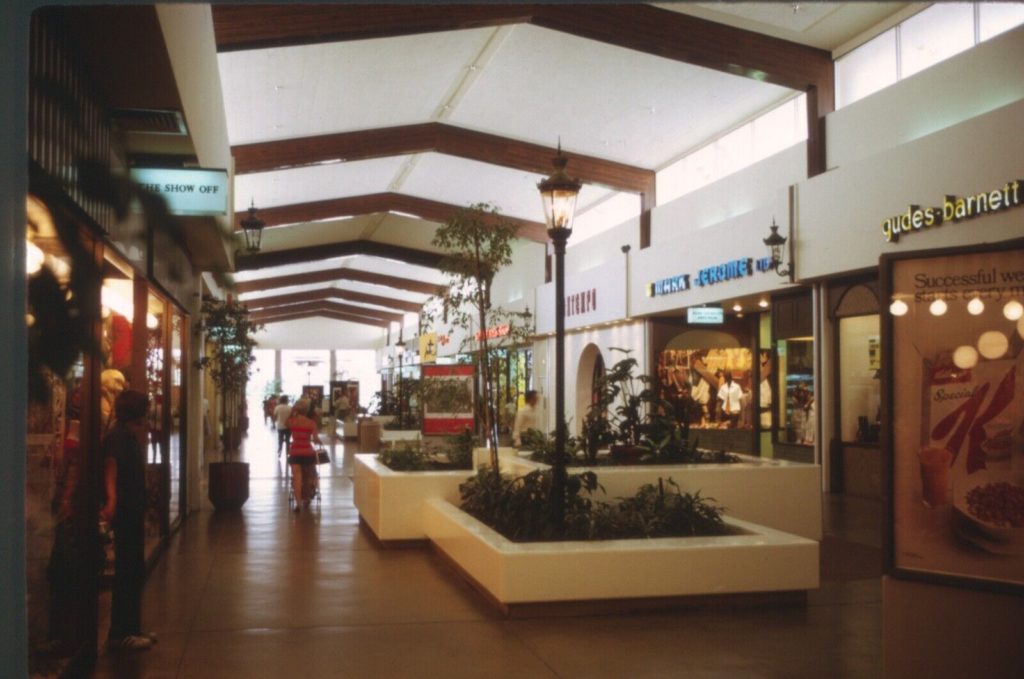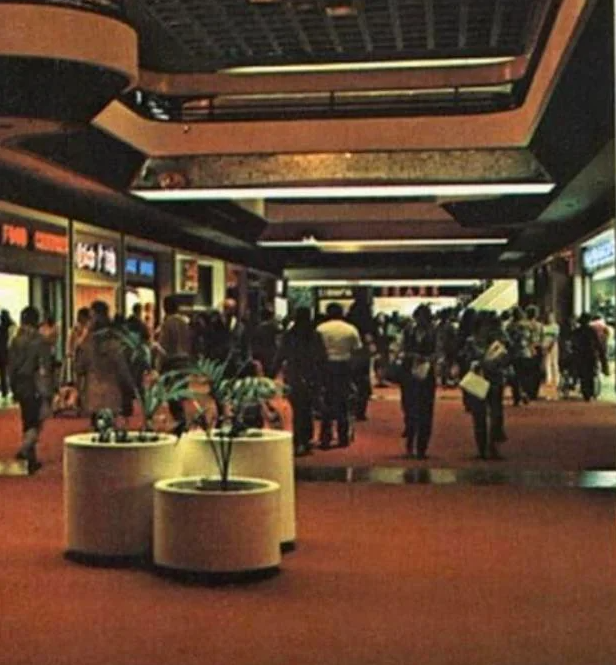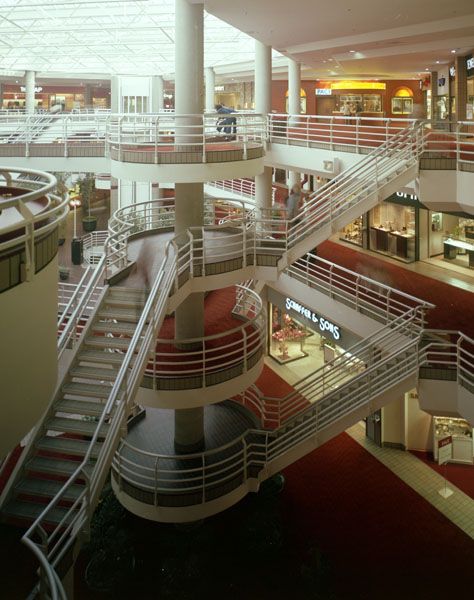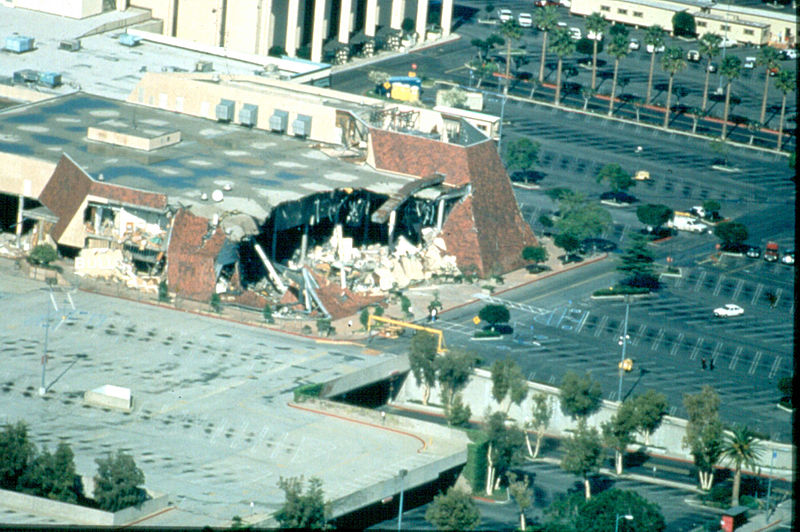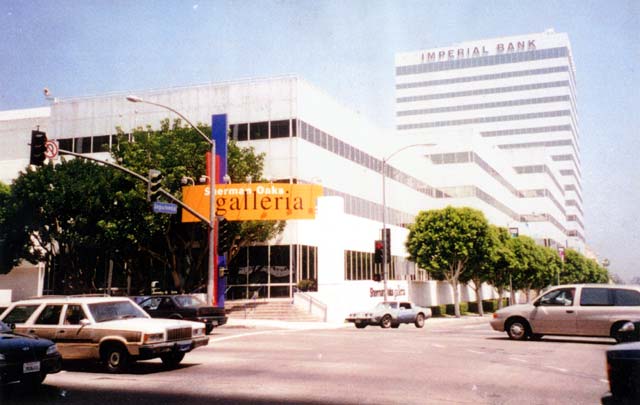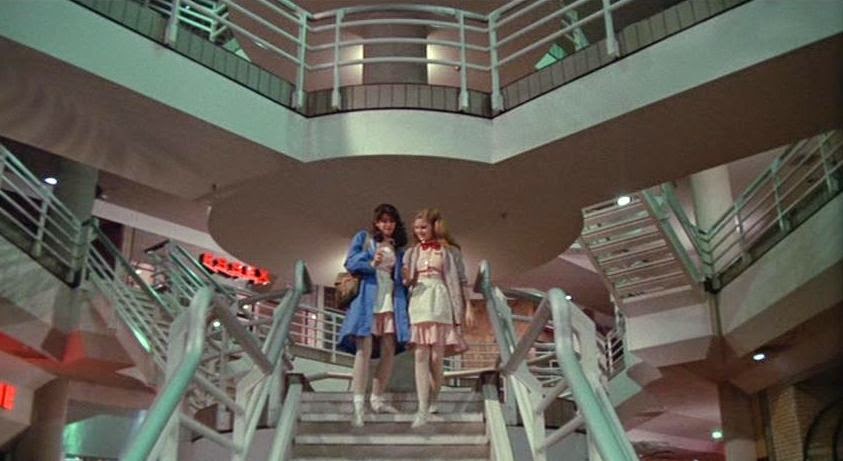Here in the delivery age, it’s hard to communicate how vital the great American shopping malls felt during their heyday. Perhaps it’s a testament to capitalism, but for a teenager growing up in America, a visit to the mall was actually an emotional experience. It went beyond the dopamine rush of consumerism. It was a social experience. On a Friday night at any given mall in the 1980s, teens could see a movie, grab some food, climb the social ladder, fall in love, and get a new pair of jeans all before 10 o’clock. But when it comes to America’s admittedly dead mall culture, nowhere contributed to this decades-long mania quite like the standard Los Angeles mall of the San Fernando Valley.
The Pioneering Malls of the San Fernando Valley
Even in these days, beyond the prime of the Los Angeles mall, you can find one in virtually every corner of the city. But most would agree that the story of the great Los Angeles mall boom started appropriately enough in the San Fernando Valley. In 1951, decades before the “Valley Girl” became a globally recognizable archetype, one of the first and most successful malls to grace the Valley opened its doors to a curious public. This was the iconic Valley Plaza mall.
Valley Plaza
Location: Laurel Canyon Boulevard, North Hollywood
Early Anchor Stores: Sears, Thrifty Drug Store, J.J. Newberry, Bond’s, Gallenkamp Shoes, McDaniels, Alexander’s, Mayfair-Owl/Rexall
Filming Location For:
- Magnolia (1999)
- Pineapple Express (2008)
- Nightcrawler (2014)
- Straight Outta Compton (2015)
- Captain Marvel (2019)
Valley Plaza was conjured from the vision of Bob Symonds who had already proven himself a success by bringing A.W. Ross’s concept of the Miracle Mile to fruition. Symonds didn’t invent the shopping mall by any stretch of the imagination. But in 1942, he had an idea to perfect it. Valley Plaza was the result. When the mall finally opened its doors in 1951, anchored by a two-story Sears, it was an immediate success. And thus ushered in the dawn of Los Angeles mall culture.
The Burgeoning Los Angeles Mall Circuit
As we mentioned, Valley Plaza was not the first Los Angeles mall to break ground. It also wasn’t the last. By the 1960s, shopping malls were sprouting up all across the Greater Los Angeles area. The next iconic mall to call the San Fernando Valley home was Westfield Fashion Square, eventually known as Fashion Square Sherman Oaks. The shopping mecca opened its doors on April 22, 1962. In those days, however, it was known by its original name: Bullock’s Fashion Square.
Westfield Fashion Square
Location: Riverside Drive, Sherman Oaks
Early Anchor Stores: Bullock’s, I. Magnin & Company
Filming Location For:
- Beverly Hills, 90210 (1990-2000)
- Clueless (1995)
- The Office (2005-13)
Meanwhile, the expansion of the Hollywood Freeway had finally stretched to Magnolia Boulevard. Combined with the recently paved Ventura Freeway, a new surge of traffic was hitting Valley Plaza. With competition mounting all around the mall, developers set to creating Valley Plaza’s most recognizable feature. In 1960, construction was completed on a 165-foot tall building; the tallest in the San Fernando Valley. Valley Plaza Tower was the crown of the popular Los Angeles mall, heralding it as shopping majesty.
But an assumption made by the Valley Plaza Merchants Associated organization opened the door for competition right in the mall’s backyard. They were under the mistaken impression that a May Company department store located at Oxnard Street was a part of Valley Plaza. The error was clarified when, in 1968, the May Company erected a new mall around it to rival Valley Plaza. This was the 600,000 square foot Laurel Plaza.
Laurel Plaza
Location: Laurel Canyon Boulevard, Valley Village
Early Anchor Stores: May Company
Filming Location For:
- Bewitched (1964-72)
- Simon & Simon (1981-89)
- Knight Rider (1982-86)
Laurel Plaza was easily dwarfed by the neighboring Valley Plaza which, by this point, had amassed over a million square feet in retail space. But the latest Los Angeles shopping mall on the block had its own appeal. Chief among them? A dedicated ice skating rink nestled amongst its higher end clothing stores, shops, and restaurants. And the competition just kept coming. The next heavy hitter to welcome shoppers was 1971’s Northridge Fashion Center.
Northridge Fashion Center
Location: Tampa Avenue, Northridge
Early Anchor Stores: J.C. Penney, Sears, Bullock’s, The Broadway
Filming Location For:
- Innerspace (1987)
- Terminator 2: Judgment Day (1991)
The Mecca of Los Angeles Mall Culture
But the true zenith of American mall culture didn’t open until October 30, 1980. By this point, the San Fernando Valley had already emphatically embraced the great American shopping mall. These shopping centers were already solidified as bastions of teenage community. But the Sherman Oaks Galleria took that potent marriage of tribalism and materialism and rocketed it into a zeitgeist-saturating aesthetic.
Sherman Oaks Galleria
Location: Ventura Boulevard, Sherman Oaks
Early Anchor Stores: Robinsons, May Company
Filming Location For:
- Fast Times at Ridgemont High (1982)
- Valley Girl (1983)
- Night of the Comet (1984)
- Commando (1985)
- Chopping Mall (1986)
- Innerspace (1987)
- Back to the Future Part II (1989)
As you can see from its popularity as a filming location, the Sherman Oaks Galleria emphasized the visual. Any film buff will instantly recognize its neon radiance. The pop culture potency of the Sherman Oaks Galleria was so undeniable, that it was even namechecked in a 1982 duet between Frank Zappa and his daughter Moon Zappa. It was appropriately titled “Valley Girl.”
Perhaps as a result of mall culture seeming to favor enclosed corridors, Westfield Fashion Square adopted some big changes in 1988. Until 1990, the Los Angeles mall underwent an ambitious renovation to convert an outdoor mall to an indoor one. It even brought along a new exotic Mediterranean theme.
Fool’s Gold in Burbank
But not every Los Angeles mall was a resounding success. Years before the thriving Burbank Town Center, the city at the edge of the valley made an earlier foray into shopping centers that crashed on a spectacular level. Today, very few people recall that Golden Mall even existed.
Golden Mall
Location: San Fernando Boulevard, Burbank
Early Anchor Stores: Pep Boys, Denco, JCPenney
Filming Location For:
n/a
That being said, the Golden Mall put in a valiant effort. Opening its doors in November 1967, the open-air pedestrian mall died a slow death, closing in 1989. Burbank Town Center was right at its heels.
So why did the Golden Mall wash out where others succeeded? Analysts have pinned the ultimate failure on numerous factors. Chief among these: no shop windows were facing the streets. Golden Mall failed to take advantage of passing motorists.
And those that the mall did manage to attract were actually turned off by its pedestrian nature. It felt like a waste to park the car so far from the shopfront. Sure, that’s the same experience the average American mall offered. But Golden Mall somehow lacked a cohesiveness that worked well in the more popular malls. Then again, by the time that Golden Mall threw in the towel, even the successful malls were feeling a cold decline.
A Crippling Merger
Mall culture began to wear a bit thin as the ‘80s transitioned into the ‘90s. Were malls still popular? Sure. But manic consumerism didn’t gel quite as neatly with the ‘90s aesthetic. The decline escalated when, in 1993, a seemingly innocuous merger dramatically shifted the landscape of malls across the San Fernando Valley. Robinsons and May came together to become Robinsons-May.
Ultimately, this would strike a critical blow to the once-vibrant Sherman Oaks Galleria. But in the early ‘90s, it just meant the consolidation of retail space. Laurel Plaza and Sherman Oaks Galleria each gave up an anchor store for the Robinsons-May merger. Northridge Fashion Center, which had expanded in 1988 to accommodate new wings anchored by a Robinsons and May respectively, turned both of its locations into twin Robinsons-May stores. But before the public had much chance to react to this merger, nature had its revenge on the material world.
Crumbling the Foundation of the Classic Los Angeles Mall
In the early hours of January 17, 1994, a magnitude 6.7 Mw earthquake rocked the Valley… and much of the area surrounding it. Despite experts later pinpointing the epicenter to Reseda, the earthquake is remembered in our cultural lexicon as the Northridge earthquake. Today, it’s still uncertain how many deaths can be attributed to the disaster, but it’s estimated to be somewhere in the neighborhood of 60 lives lost. Structural damage was extensive, even as far away as 85 miles from the epicenter.
Laurel Plaza shuttered for a time with the exception of its May Company anchor store. The once lively Sherman Oaks Galleria had a nearly opposite experience. While the mall itself closed for 11 days to undergo repairs, it opened in decent condition with the exception of their Robinsons-May anchor in the south wing. Westfield Fashion Square took extensive damage but ultimately managed to soldier onward.
Arguably, no Los Angeles mall was hit harder by the Northridge earthquake than Northridge Fashion Center. All six of its anchor stores needed to close for repairs. Bullock’s was condemned, requiring rebuilding from scratch. J.C. Penney struggled deep into 1995 through post-earthquake renovations before being completely gutted and rebuilt from the skeleton up. In addition, severe damage to parking structures and the interior corridors of the mall left Northridge Fashion Center floundering through the remainder of the ‘90s.
The Dulling Neon of the Shopping Mall’s Golden Age
Valley Plaza had endured the earthquake well by comparison. But the pioneering Los Angeles mall was suffering through its own problems. Declining income in the area and increased competition were staggering the North Hollywood shopping center. To make matters even worse, management couldn’t agree on a direction forward. By the end of the ‘90s, Valley Plaza needed to answer to dozens of owners, each with a different uncompromising solution.
Meanwhile, the Sherman Oaks Galleria was trying to drum up post-earthquake business with just a single operating anchor store. Robinsons-May’s inability (or refusal) to open had already caused several neighboring shops that had relied on the anchor to shutter.
In 1998, after Robinsons-May had spent 4 years dormant in the wake of the Northridge earthquake, the galleria filed a lawsuit. It claimed that, by not opening in a timely manner, Robinsons-May was violating its lease agreement. The department store in turn counter-sued, claiming the Sherman Oaks Galleria had failed to properly promote their shops and stores.
The dispute was mutually settled in January 1999 when Robinsons-May agreed to leave the Sherman Oaks Galleria. In April of 1999, the Sherman Oaks Galleria closed its doors for major renovations. No exact moment can pinpoint the end of the golden era of the Los Angeles mall. But the closure of the original Sherman Oaks Galleria is as close as it gets.
The Malls That Survived… and the Ones That Didn’t
Of course, we all know what happened next. Shopping malls fell further out of fashion as the internet opened new avenues and the world became more delivery-oriented. And then there was a pandemic which wasn’t very good for any mass congregating. Yet, some of the malls in Los Angeles continue onward, finding patronage in those that still enjoy a brick-and-mortar shopping experience.
After the earthquake, Valley Plaza and Laurel Plaza both relied solely on LA’s Community Redevelopment Agency for repairs. Over the decades, ambitious plans came and went almost as often as buyers. But the Valley Plaza that seemed to be there from the beginning of the Los Angeles mall boom has been officially gone for years. Today, a mixed use commercial structure, NOHO West, stands in its place. Offering residential units, office space, and retail shops, NOHO West also overtook the neighboring Laurel Plaza after it was sold in 2014.
Despite its extensive earthquake damage, Northridge Fashion Center joins Westfield Fashion Square in still standing to this day. Amidst natural disasters, home delivery, and iconic brands fading into obscurity, Northridge Fashion Center just keeps going. It even recently featured in the 2020 musical comedy The Prom.
In 2002, the former Bullock’s Fashion Square underwent yet another name change when the Westfield Group purchased a half-interest in it. The Los Angeles mall was re-christened Westfield Shoppingtown Fashion Square before finally shortening to its current name. Its last major renovation was in 2013, adopting a more contemporary look.
In the Ruins of Los Angeles Mall Culture
When the Sherman Oaks Galleria finally re-opened in 2002, its former kaleidoscopic neon landscapes were completely wiped away. In its place? An open-air shopping center. Not quite Burbank’s Golden Mall, but not exactly a far cry from it either.
If you’re looking for any trace of the legendary Los Angeles mall, your best bet is to visit the Pacific 16 Theatres. The movie theater stands in place of what once was the upper level of the Robinsons-May store that plagued the galleria with its post-earthquake vacancy. The rest of the old mall has been relegated to office space.
Today, you’ll still find packs of middle schoolers congregating on tile floors flanked by fast fashions. There are still places where kiosk vendors compete against one another. Still materialistic sanctuaries where the air is always perfumed with warring fragrances of cinnamon, garlic, and floral soap. But the crowds are thinner than anything we remember from the ‘70s, ‘80s, and ‘90s. Will the great Los Angeles mall ever return? We have a feeling that those Orange Julius-flavored Friday nights bouncing from food courts to arcades to department stores to movie theaters are long gone. But then again… who can really say fer sure?

